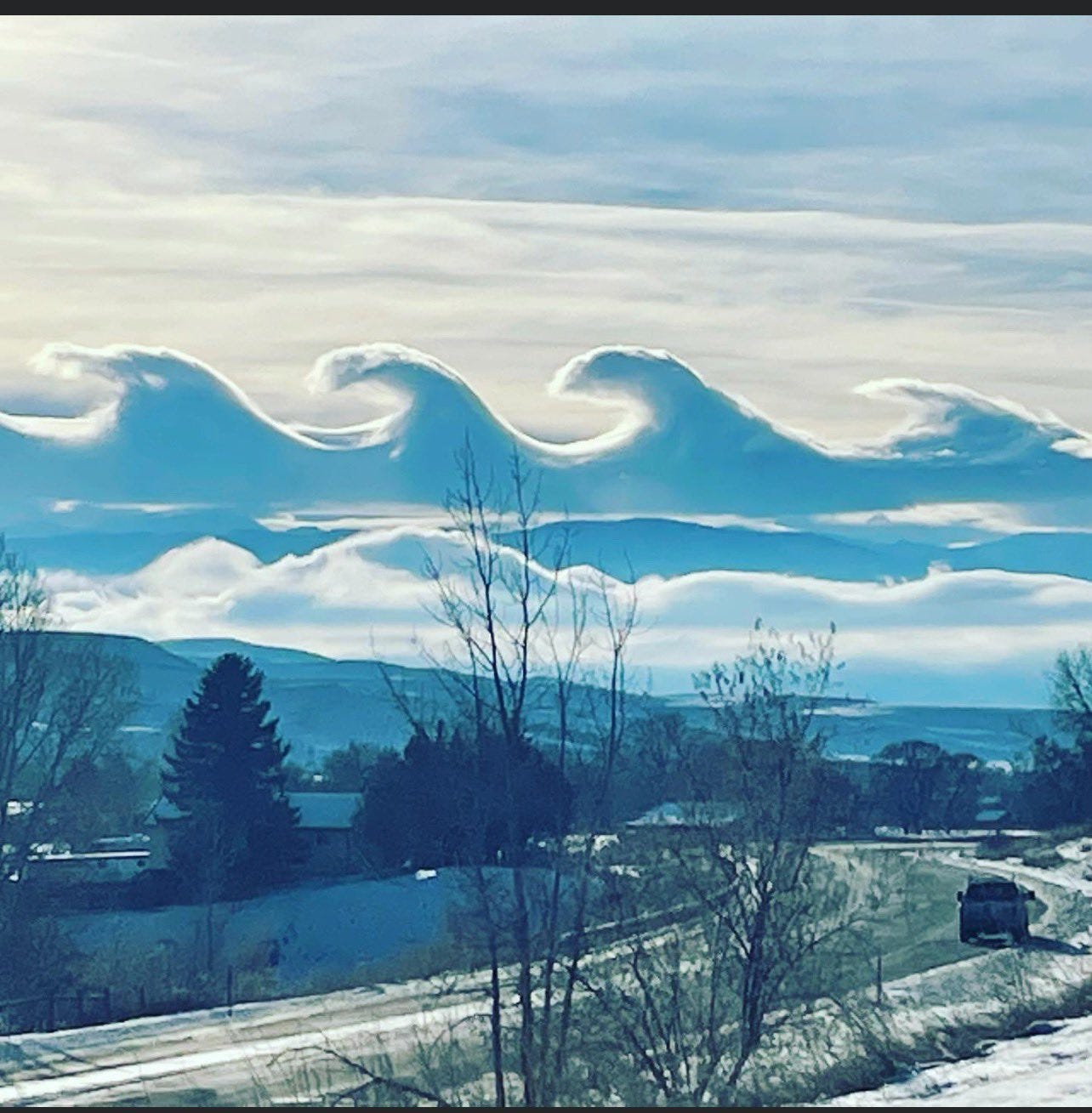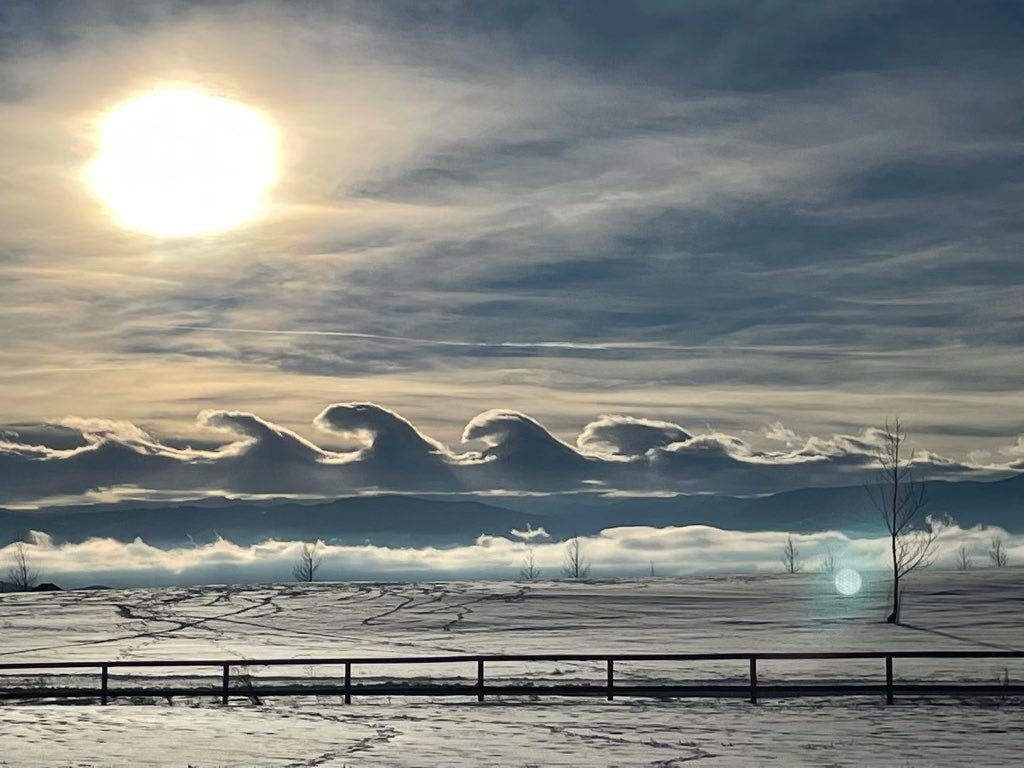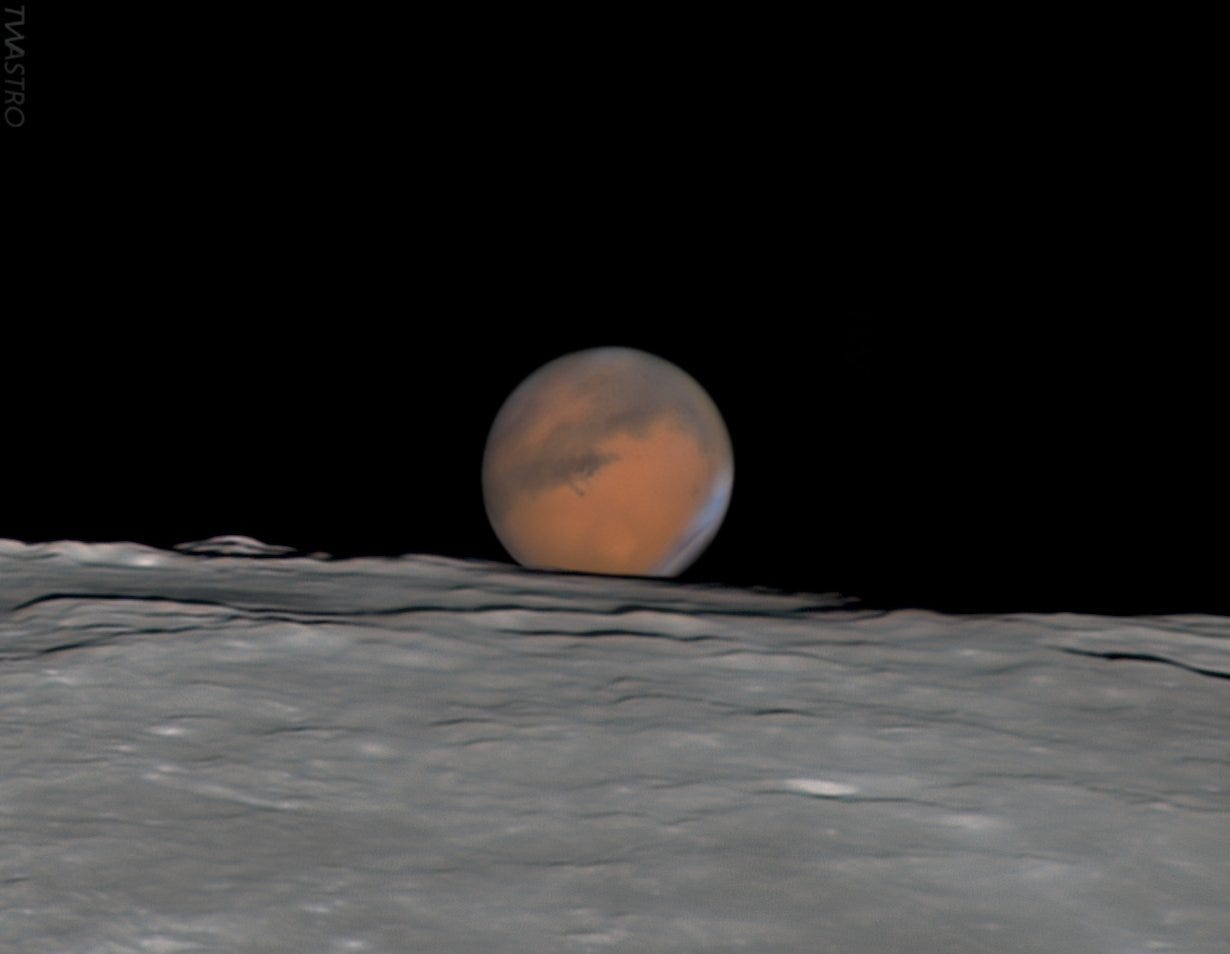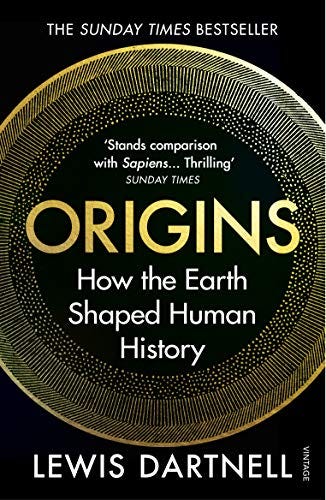Hello again! This is Everything Is Amazing, a science-obsessed newsletter about curiosity, attention, awe and kindness. (Yes, kindness is indeed a branch of proper scientific research - and isn’t that a grand thing?)
First, some stuff this week that made me go “WOW!”:
These rare Kelvin-Helmholtz clouds showed up over Wyoming on Tuesday, in as perfect a display of fluid-like atmospheric physics as you could ever hope to see.
They looks like waves breaking because - they’re waves, breaking. Much the same fluid dynamics equations are at work as in our seas, giving a slightly unsettling reminder than we all live at the bottom of an ‘ocean’, except it’s made of air, not water.
As for what’s specifically going on here, the principle is pretty simple. The windspeed at the top of the cloud is faster than at the bottom, and that difference (the technical term is "shear") churns the top layers into these colossal ice-cream-like scoops of condensed water vapour:
Or, in the much better words of former BBC Weather forecaster and cloud enthusiast Peter Gibbs:

I got both photos via Twitter user Jim Scott, but he didn’t take them - I haven’t tracked down the original photographers yet, so I hope they forgive me for using these images here!
(Update: possibly the photographer of the first pic is Abbie Long, as this shot is very similar. Hat-tip to Steven Hardesty for finding this.)
Meanwhile, at an enormous distance away and in a direction that we gravity locked super-apes like to think of as “overhead”, this happened:
It’s called a lunar occultation, and like the Kelvin-Helmholtz clouds, it’s a fairly simple principle to get your head around: from our perspective, the edge of the Moon blocked our view of Mars (or at least, the view of everyone in the Americas, Europe and Northern Africa at the time).
This particular image is from astrophotographer Tom Williams from Wiltshire in the UK - and you can see the original raw, unprocessed data he was working with here.
(Here’s another shot of the event from Phil Plait of the Bad Astronomy newsletter.)
Okay, all well and lovely to see - but it’s only when you plug a few numbers into an image like this that your brain starts to overheat. This is a picture taken over the top of a place (the Moon) that’s around 403,000 kilometres away, to glimpse another place that’s over 82 million kilometres distant.
How can our minds reconcile that? They can’t. They just flop around in a panic, and then we have to lie face-down in the garden screaming uncontrollably until we feel better. (Just me? Ah.)
So, to maintain a tenuous grip on reality, let’s go the other way, and look at what’s under our feet.
That’s what I’ve been doing with this newsletter since the start of the year. In thematic terms it’s been a year of Really Big Geology - most recently in the ‘underseason’ I’m running for paid subscribers, but also stretching back to the newsletters and Twitter threads that have grown Everything Is Amazing’s readership by around 1,500% (!) since December last year.
So it was a bit annoying in late October to discover the book I should have read at the beginning of my own journey into all this stuff.
It’s this one:
I really should have been yelling about it to you since February. (Sorry. My bad.)
It provides context for a lot of the stories I’ve enthused about this year, including the Zanclean Megaflood (and its corresponding Twitter thread)…
…and the lost European world of Doggerland (Twitter thread here)…
…and the Mid-Atlantic Trench, part of the biggest mountain-chain on our planet (Twitter thread)…
…and most recently, the ancient megaflood that tore away the remaining land-bridge connecting Britain with France.
(Bonus gonzo edition: the story of a German engineer who decided the way to world peace was to drain the Mediterranean, with all the xenophobic yikes that it would entail:)
Dartnell’s Origins beautifully connects all of this together - in a way I might have found disheartening if I’d read it before attempting my own writeups, so maybe this way is for the best (at least for me). It’s a thrilling read, delivered with admirable clarity and precision.
And I’d like to prove it to you. Would you like to come read one of its best chapters with me, for free?
You may remember I’ve been using a great new reading app called Threadable for looking at colours, the big theme of the current season of Everything Is Amazing, and filled with weirdness like this.
We’ll be returning to colours in the next newsletter, but - I’ve just done a bit of a switcheroo with my Threadable reading circle. For the next month, instead of continuing with colour theory, we’re returning to the Whoppingly Big Earth Sciences, to see what other wonders we can unearth and ideas we can chuck around together - starting with the whole of Chapter 4 of Origins, “The Geography Of The Seas.”
Want to join the now-over-a-hundred of us doing that? Here’s how:
- you’ll need an iPad or iPhone running iOS 12.4 onwards, or macOS 11.0 (apologies, Android & Windows users, Threadable are still in the early stages there.)
- click the button below:
…after which it should automatically take you to my reading circle, now called “Active Geology with Mike Sowden”.
(If it doesn’t, trying signing in, going to “Home,” finding “All Circles” and swiping sideways until you find it. Request access, and as soon as I see your request, I’ll let you in.)
Cheers! See you next time.
- Mike
Images: Tom Williams; Bjorn Snelders.










Great post! We've been members for a while of the Cloud Appreciation Society - do check it out! https://cloudappreciationsociety.org
Hi, thanks for the book recommendation!